NFL Draft 2023: Projecting the QB Stars and Busts
Zac Robinson spent a few years helping quarterback prospects prepare for the NFL scouting combine and the draft before working with Matthew Stafford as the Rams’ quarterbacks coach and pass-game coordinator.
Robinson prioritized drops from underneath the center, footwork off play-action passing, college film reviews and prepped quarterbacks as much as he could for life in the NFL. But Robinson often stopped for questions and created time for comprehension during a chaotic period in which QB prospects often overwhelm themselves by feeling the need to be perfect to impress teams.
“Telling them it’s O.K. to ask questions,” says Robinson, a former backup quarterback with the Patriots, Seahawks, Lions and Bengals. “[NFL] coaches will find out if you’re making something up. The biggest thing was just be authentically yourself and that goes a long way.”
NFL teams allocate countless resources in search of the next star quarterback through the draft, and that involves learning about the respective prospect as a person and player, a process that created the need to be perfect. But there’s no such thing as the perfect prospect and there’s no perfect model for projecting whether a QB prospect will be a star or a bust.
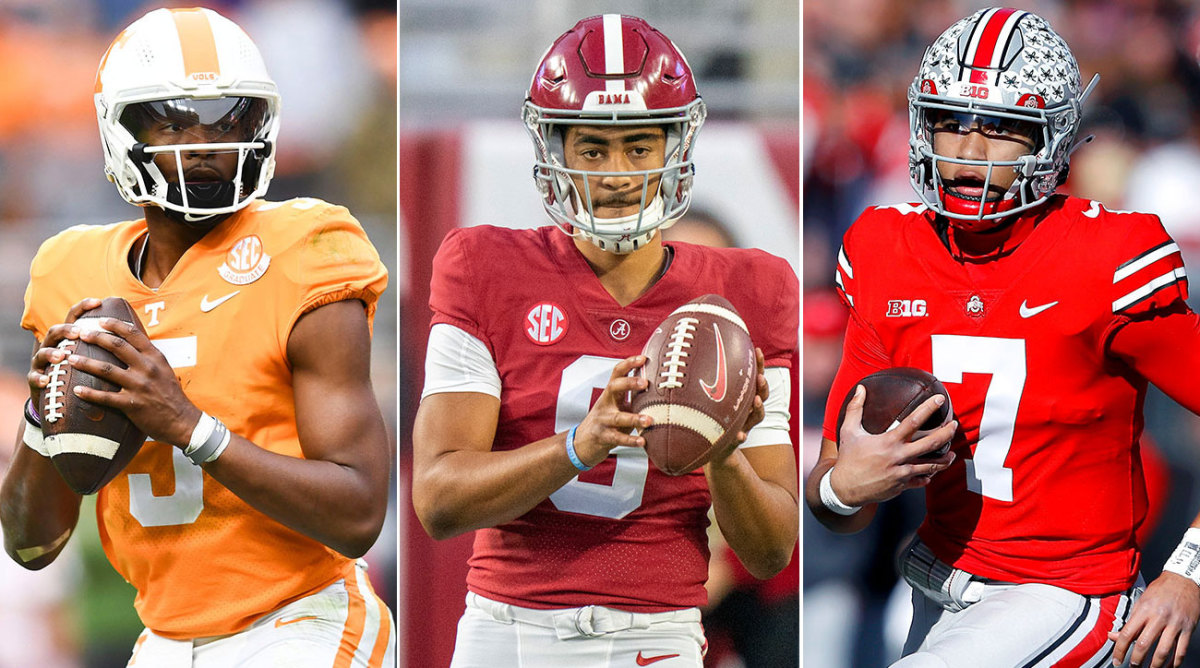
You can, however, create a list of must-haves for on- and off-the-field qualities, which varies from team to team. Once a player with those qualities is identified and there’s an opportunity to draft him, it’s then on the team to ensure the surroundings are set up for success, another area of uncertainty in this guessing game for landing the next star quarterback.
Sports Illustrated spoke to coaches for a better understanding of how NFL teams evaluate quarterbacks and how this draft’s top prospects fit into what teams deem paramount, while providing scouting reports on Alabama’s Bryce Young, Ohio State’s C.J. Stroud, Kentucky’s Will Levis, Florida’s Anthony Richardson and Tennessee’s Hendon Hooker.
The responses were similar, but the priority level for certain QB traits were often different. For Robinson, he has three buckets for traits when it comes to scouting quarterbacks in the draft.
The arm: “Are they a natural thrower of the football? That’s something, along with your release, can be tweaked throughout time, but if you’re a natural thrower, you’re a natural thrower.”
The field vision: “How well they see the game. How well they process.”
The feel for the game: “You just love to see what types of instincts they have in the pocket. Are they willing to hang in there? Are they suddenly sliding and moving while they’re maintaining their eyes down the field? … A feel for the pocket, being able to remain a passer at all times.”
Here’s a scouting report on each of the top quarterbacks in this year’s draft:
Bryce Young
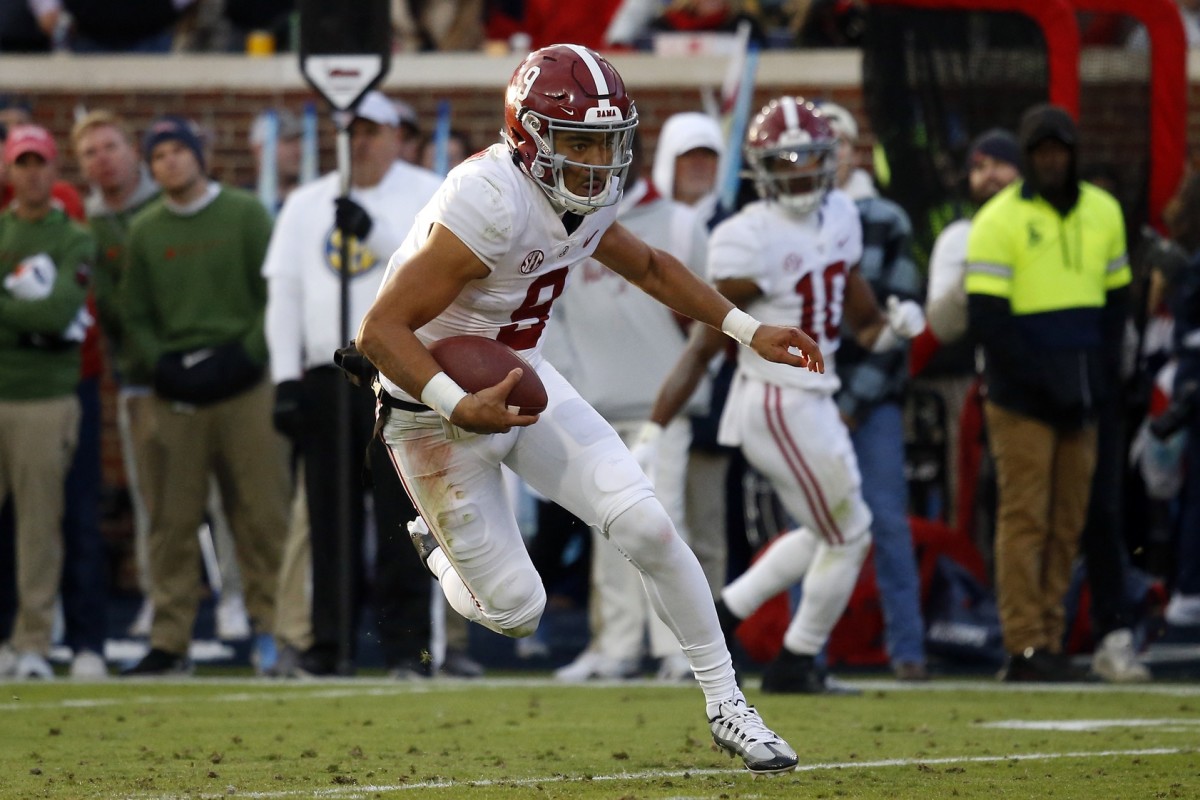
Young, the 2021 Heisman Trophy winner, is the front-runner to be selected No. 1 by the Panthers next week. And going off Robinson’s three buckets, Young might be the QB prospect that fills all three the most.
“He’s got an unbelievable feel for the game,” says Robinson, who’s been on the Rams’ coaching staff since 2019. “His instincts are off the charts. It looks like he’s got eyes everywhere, in the back of his head. Some of that stuff really stood out. He’s got good anticipation … but the overall instincts and feel for the game with that guy is pretty special. It’s something that you don’t see too often.”
“Bryce Young, he’s like Steph Curry with a football,” says Liam Coen, Kentucky’s offensive coordinator and former Rams offensive coordinator.
But one bucket that Young can’t fill is the standard size preferences for playing quarterback in the NFL. At 5'11" and a playing weight that hovers around 200 pounds, Young’s size and narrow frame was concerning for the people we spoke to for this story, but many said it’s not a dealbreaker if Young’s vast traits and intangibles are paired with a stout offensive line, which the Panthers might have based on how their line played last season.
“It’s concerning,” says an NFC coach who preferred to remain anonymous. “I think everybody will always wonder about his durability and ability to see over the offensive line, but Drew Brees kinda knocked that out because of his ability, and gotta give credit to Sean [Payton]. What Sean did was he got a big stout center and two huge guards to keep that pocket clean for him to step up into it and deliver a good ball.”
C.J. Stroud
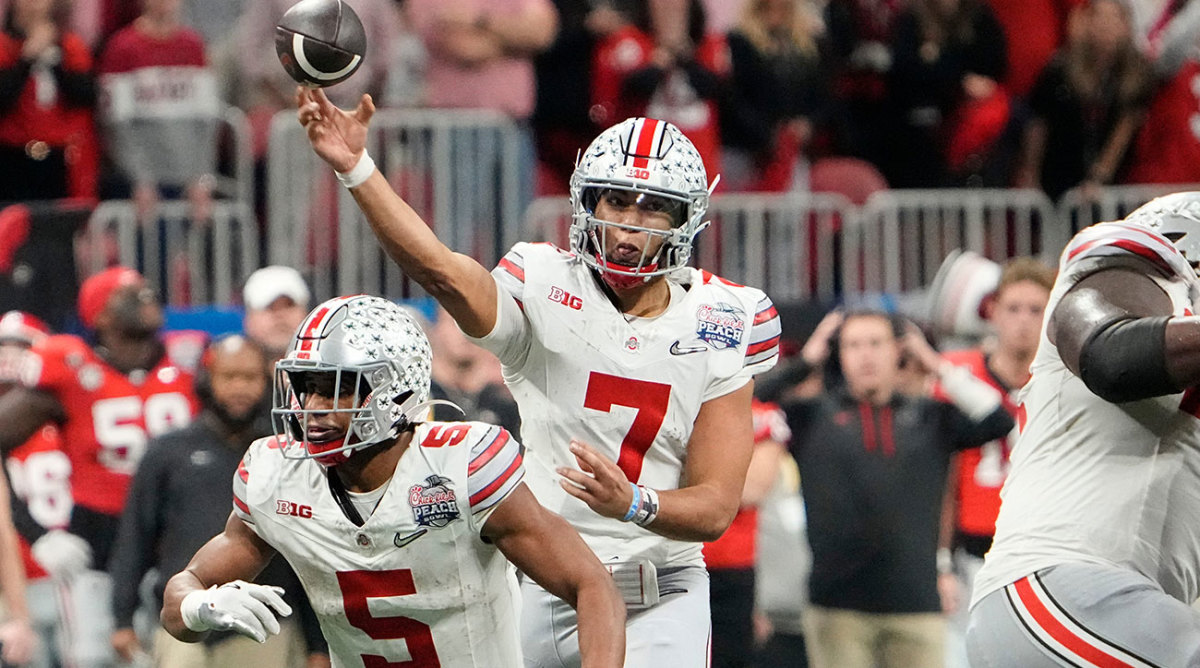
Our anonymous NFC coach is a fan of Young’s anticipation as a thrower, but referred to his arm strength as good enough and not great like Stroud’s. Having arm strength can limit the mistakes of young quarterbacks when it comes to diagnosing and reacting to defenses, another area of priority for QB evaluations.
“C.J. Stroud’s got a good arm, and because of his arm, I think he can wait a little longer [to process and go through his reads], and then he’ll gun it because he’s got that quick-twitch reaction,” the NFC coach says. “You can get away with just having good arm strength, not great arm strength, but if he’s got great arm strength and quick twitch, man, that makes up for a lot of late decisions. So, again, it’s one of those things, what is your preference? I’ll take what we get in terms of quick decision-making and anticipation, and if you can couple that with some arm strength, man, that’s a pretty special guy there.”
Our anonymous NFC coach also went deeper into the QB traits he prioritizes while evaluating draft prospects.
“You’re always looking at the arm. What kind of ball does he throw? Does he have arm strength? Can he make the hard throws? The long throws, from one hash to the sideline? And see a quick twitch. Does he see things quickly? Does he diagnose them and gets the ball out quickly? And the footwork, obviously. … Diagnosing and reacting are important because a big part can be timing. If you can get the ball out quickly and you anticipate well, can he lead the receivers? Can you throw them open?”
But before listing the on-the-field qualities, our anonymous NFC coach went with moxie, toughness and leadership as other important qualities. Robinson also had a similar first response, saying competitiveness, eagerness to improve and love for the game shouldn’t be overlooked during extensive evaluations.
“That’s a big concern if there’s no leadership,” the NFC coach says. “People will talk about a guy’s skill set and then leadership. … You want people to gravitate to the guy. The face, the guy that everybody is looking to for when things get tough, and if it’s not there, that’s a tough thing to create.”
Some draft pundits have knocked Stroud for playing with a star-studded offense at Ohio State, but gaining the respect of future NFL players certainly falls under the leadership category, and Stroud displayed plenty of moxie during a remarkable performance against No. 1 Georgia in the College Football Playoff. Stroud finished with 348 yards and four touchdowns on 23-of-34 passing while adding another 34 yards on the ground.
Curiously, the quarterbacks who flash arm strength similarly to Stroud, but didn’t have a talented supporting cast or the same level of success, often get the benefit of the doubt because most NFL teams believe their respective coaching staff can reach the untapped potential.
Will Levis
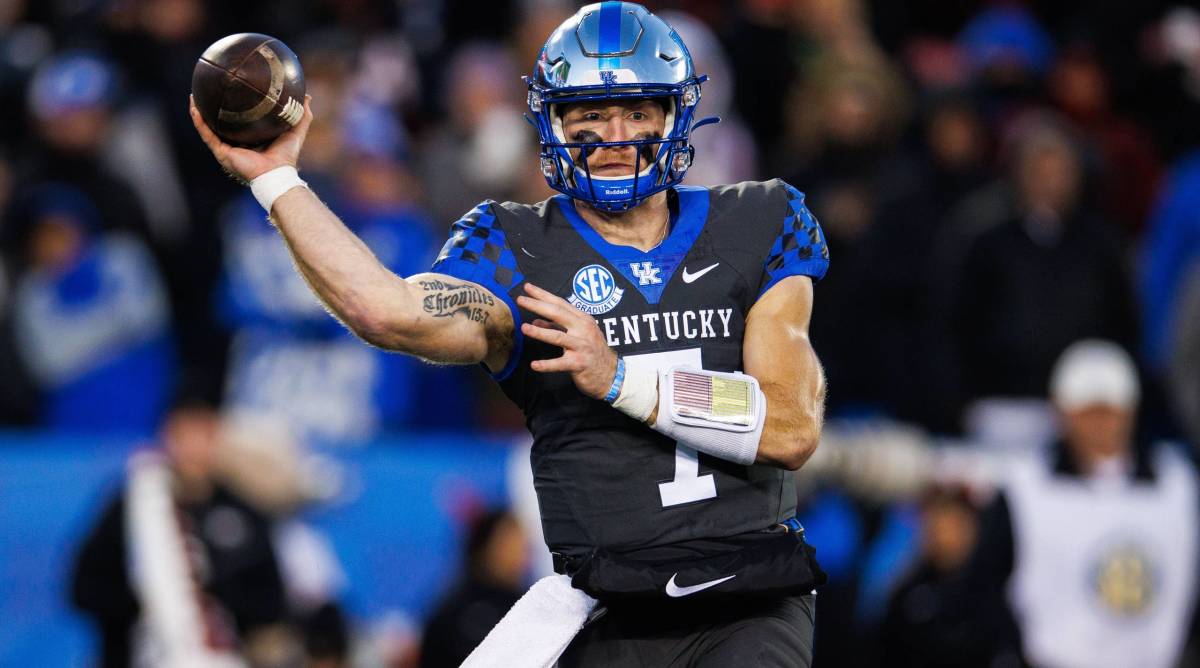
Richardson and Levis aren’t as polished and currently can’t do what Young and Stroud do as pocket passers, but they’re viewed as top-15 prospects due to their size, arm strength, athleticism and high upside for what they can do under NFL supervision.
“Probably some parallels with Anthony Richardson, Will Levis to Josh Allen because they’re unproven in a lot of ways with a ton of talent, but haven’t had quite the wins and losses of the other quarterbacks in college,” Coen says. “The NFL is about potential. It’s about what can you do with this talent.”
Coen called Richardson “extremely talented” but couldn’t offer a full scouting report on the former Florida quarterback. That wasn’t the case with Levis because Levis had his best college season in 2021, when Coen was Kentucky’s offensive play-caller, throwing for 2,406 yards and 19 touchdowns.
Coen agrees Levis needs to improve on his fundamentals and the small details of playing quarterback in the NFL, but he raved about his size (6'4", 229), toughness, leadership and desire to get better. Coen also provided a scenario for why size, athleticism and arm strength are crucial at the next level, which could explain why those traits might be prioritized over having polished fundamentals.
“He is very talented,” Coen says about Levis. “Has an explosive arm, can run, can jump, can do a lot of athletic things most quarterbacks can’t do. Something he’s been working on is the touch, the shorter routes, making the routine throws routine. Those are things he’s working on, but I do know when it comes to … in the NFL, on third-and-10 and the defense is playing man free and the rush is coming, San Francisco’s rush is coming, you better be able to stand tall and deliver the ball on time and hard and fast, and some guys, like Bryce Young is a super high anticipation thrower, and that’s what makes him great. But when you have to stand tall against the San Francisco 49ers’ rush and there’s tight coverage and to be able to stand tall and make a throw and get up and do it again and get hit by [Nick] Bosa over and over again, typically I’ll take that over somebody that maybe struggles to throw with the shorter things accurately all the time. The NFL is an explosive league; it’s a passing league still, and you gotta be able to push the ball down the field vertically to play quarterback in this league.”
The Ravens’ Lamar Jackson and the Eagles’ Jalen Hurts are two comps for Levis’s strengths. He might not be an exceptional pocket passer, but delivering an accurate deep ball with the ability to move the chains with his legs could be a successful combination in the right scheme.
Coen, the Rams’ OC in 2022, said to trust the tape after being asked how he evaluates quarterbacks, but then his response was similar to the others. After identifying which prospect completes the checklist, the question then becomes: How can they improve under the guidance of NFL coaches while working full time in an NFL facility?
“At the end of the day, your tape is your résumé, so a lot of the things that you put on tape before that are probably very similar to who you’ll ultimately be as a player,” Coen says. “Now there’s a lot of improvement. You look at Josh Allen. You look at some of those guys that maybe didn’t quite have the pieces around him to really flourish and be the type of player that they can be. Josh Allen was at Wyoming. He didn’t have a ton of players around him; the team wasn’t very good, but you saw some unbelievable traits and talent and skill set, and then you put him in an NFL building and with a ton of really talented players around him, and you see his body of work improve.
“You look at C.J. Stroud. He’s throwing to some … that receiver room might be better than some NFL rooms, so it all has to be somewhat relative, but your tape is ultimately your résumé. … The one thing that goes unnoticed a little bit is comparing NFL and college quarterbacks and how college quarterbacks are going to be in the NFL.”
Coen emphasized the difference in time college players have to focus on football compared to pro players. That’s why mistakes can be overlooked when it comes to mechanics, and physical traits are prioritized because that can’t be coached.
Anthony Richardson
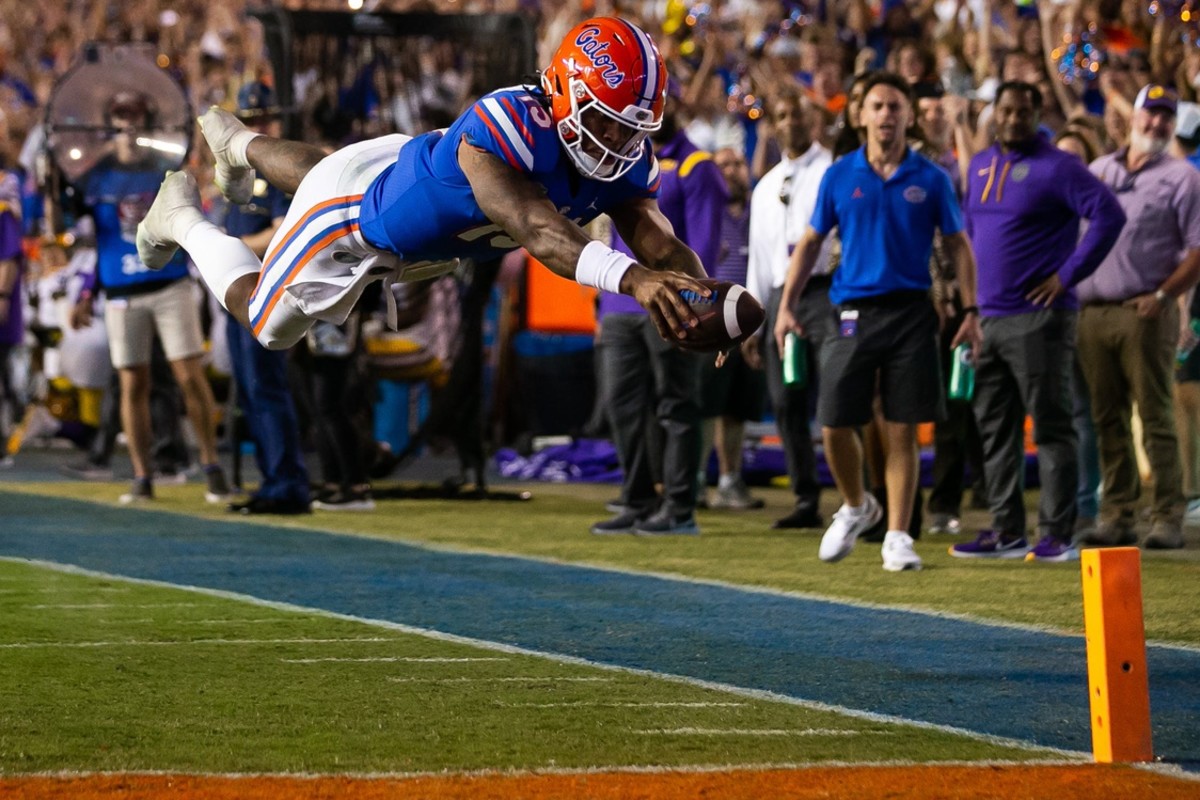
Richardson has similar skills as Levis, but his accuracy issues were a concern for some, and most people I spoke to agreed Richardson would benefit from having a coaching staff that has time to develop him.
With Indianapolis picking fourth in the first round April 27, Colts coach Shane Steichen has time as a first-year head coach. Perhaps the Titans, at No. 11, also have time to develop a quarterback with new general manager Ran Carthon and an established head coach in Mike Vrabel.
“Do you have the luxury of having a guy that you can groom, which is obviously really hard nowadays with the pressure to get these guys out there and get some snaps under their belts,” Robinson says. “There’s so many different variables that go on with the quarterback position, and so much of it is what situation you’re thrown into and the experience, and later down the line guys … guys with upside, you’re hoping you’re in a good situation. You’re not putting too much on those guys’ plates early in their career.”
Richardson might have the most upside based on his elite athleticism and vast skill set, but accuracy is a concern and might be a tough area to improve in the NFL. Richardson had a 53.8% completion percentage in 12 starts with Florida last season.
“That’s a concern,” the NFC coach says about quarterback prospects who struggle with accuracy. “Now that’s up to you, the OC and QBs coach. Do you think the accuracy can be corrected because of footwork? Because of his throwing mechanics? Or is it the understanding of things?”
Steve Calhoun, a longtime private quarterbacks coach, listed accuracy, football IQ and love for the game for what NFL teams prioritize based on the several conversations he’s had with league executives and coaches while inquiring about quarterbacks he’s trained in the past two decades as the founder of Armed and Dangerous Football.
“I think accuracy can be taught, but in the NFL, you don’t have a lot of time to really focus on those issues because of the time restrictions that you have in the NFL during the week,” Calhoun says. “That could be an issue for some teams, but if you have somebody on your staff that could really dedicate that time to helping you with your accuracy issues, and what I believe it starts with your feet and then of course with your throwing motion, that can help.”
Hendon Hooker
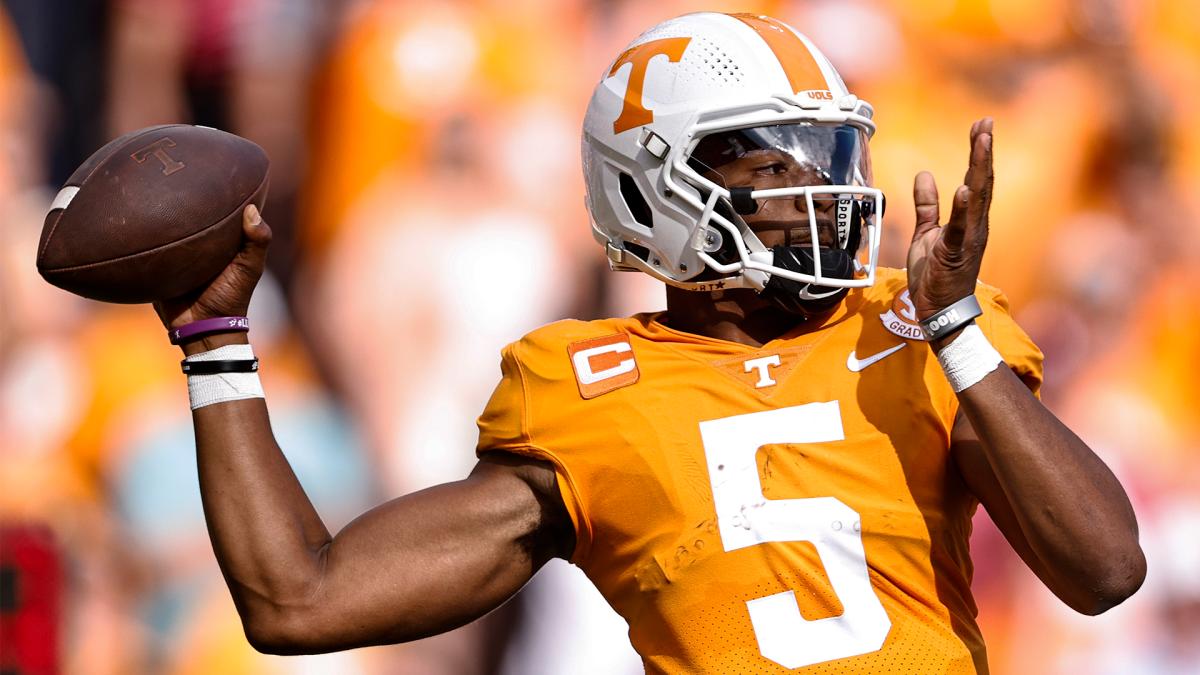
Calhoun’s latest conversations with NFL teams have been about Hooker, who has worked with Calhoun for almost nine years.
Calhoun has answered several questions about Hooker’s progress after the torn ACL he sustained in November and how his skill set would translate in the NFL after running a unique offense at Tennessee.
“They definitely had concerns that Hendon never took a drop at Tennessee,” Calhoun says. “I told them absolutely [Hooker’s game would translate to the NFL], because any time I’m working with Hendon, we never did Tennessee’s footwork because he does so much of it there. It’s already locked in, so I always had him working NFL drops, three-step, five-step, five on time, five hitch, seven on hitch, bootlegs, and stuff like that, so he can always be up to speed on what’s going on at the next level, so he can make the translation seamlessly.”
Hooker is 25, and some might view his age as a concern, but Calhoun counters that his maturity and mental makeup will benefit him in an NFL locker room.
“I think his mental makeup, along with Bryce and C.J., I think those three quarterbacks are the top three,” Calhoun says. “But Hendon’s mental makeup and the camaraderie he has with his teammates, I think he can step into an NFL locker room and command that respect even from someone who’s older.”
Hooker is an intriguing prospect because he has the size, accuracy and football IQ, but the injury, age and playing in a unique college offense might keep him out of the first round.
Calhoun said Hooker probably would be a lock to be a top-15 pick if he hadn’t torn his ACL. A nonbiased opinion from our anonymous NFC coach supports Calhoun’s theory.
“I like Hooker, the kid from Tennessee,” he says. “I think he’s another guy who can flick the ball, but he’s got great anticipation and flicks it out there because he anticipates well, and gives his receivers a chance to get there. I think those three guys [along with Young and Stroud] are a few of my favorites.”
Final report
There are various ways for scouting quarterback prospects and projecting which ones will be stars and busts. Hopefully this story provides a better understanding of what NFL teams prioritize during extensive evaluations and how some view this draft’s top quarterbacks.
There might not be one right answer, but this quote from Robinson might be the best way to simplify what makes a future franchise quarterback.
“Ultimately, the game is still won from the pocket,” Robinson says. “You gotta be able to make throws from the pocket, and I don’t think that’s ever going to change, but that added element of being able to use your legs is always going to be a luxury. But I do think when you look at the top guys, they still can make those throws from the pocket, and it’s what makes those other guys really special, the Herberts, the Mahomes, the Josh Allens, the Burrows.”
